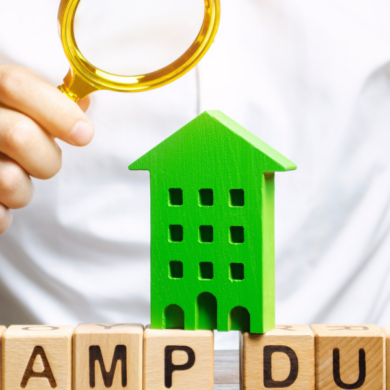Transition from Renter to Homeowner – Navigating the Exciting Journey for First-time Homebuyer
January 25th, 2024

Transitioning from being a renter to a homeowner involves financial assessment, loan exploration, and navigating the real estate market. It is about finding the right property, negotiating well, and embracing ownership responsibilities for long-term stability & personal fulfilment.
Embarking on the shift from renting to homeowning is a monumental step that transforms the landscape of one’s life. It marks a shift from the transient nature of renting to the stability & permanence of owning a piece of property. The journey from tenant to homeowner is a thrilling adventure filled with excitement, challenges, and a sense of accomplishment. From the initial contemplation of financial readiness to the joyous moment of receiving the keys to your new home, this is a transformative adventure.
Here, we will explore the various aspects of taking the leap into property ownership – offering insights and guidance to those navigating the complex yet rewarding world of real estate. Whether you are a first-time buyer or someone looking to upgrade to a new home, the path to homeownership is full of emotions, decisions, and learning experiences.
From understanding the financial implications of purchasing a property to exploring the real estate market in detail, every step contributes to the tapestry of your homeownership journey.
Table of Contents
Advantages of Transitioning from Renter to Homeowner
This is a significant life decision with many advantages – such as financial benefits related to income tax & rent, long-term investment potential, stability that comes with a permanent home, the freedom to personalise your living spaces, and pride of ownership. Each of these facets contributes to the overall appeal of making a house your home.
-
Building Equity
One of the primary advantages of transitioning from renting to homeownership is the opportunity to build equity over time. With each EMI payment, you are contributing to your ownership stake in the property. This equity can be leveraged for future investments or used as collateral, providing a financial asset that renting does not offer.
-
Stability and Long-Term Investment
Homeownership provides stability that renting often cannot match. When you own a home, you have complete control over your living space, and are not subject to the uncertainties of rent fluctuations or the whims of landlords. Historically, real estate has always appreciated over the long term, making homeownership a potentially lucrative investment.
-
Personalisation and Pride of Ownership
Owning a home grants you the freedom to personalise your space to your liking, which is often not possible with renting. From painting the walls to landscaping the front yard or backyard, you have the liberty to make your house a true reflection of your personality and preferences. This level of personalisation fosters a strong sense of attachment to your home, creating a place that feels truly yours.
Financial Readiness Assessment for Homeownership
Assessing your financial readiness for homeownership involves a comprehensive examination of your budget, credit score, and preparedness for unexpected expenses.
-
Budgeting for Homeownership
Before taking the plunge into homeownership, assess your current financial situation and establish a realistic budget. Consider your monthly income, existing expenses, and potential costs associated with homeownership, such as loan, property taxes, insurance, and maintenance.
-
Credit Score and Loan Eligibility
Your credit score plays a pivotal role in determining your eligibility for a home loan and the interest rates you will be offered. Obtain a copy of your credit report and review your score. A higher credit score results in better loan terms.
-
Emergency Fund for Homeownership
Homeownership comes with unexpected expenses, from sudden repairs to unforeseen emergencies. Establishing and maintaining an emergency fund earmarked explicitly for homeownership is a prudent financial strategy.
Property Market Analysis Before Transitioning from Renter to Homeownership
By researching real estate trends, understanding property values, and identifying suitable neighbourhoods, you can equip yourself with the knowledge to make a sound investment.
-
Researching Local Real Estate Trends
Analyse property prices, demand-supply dynamics, and the trends in the real estate micro-markets you are interested in. This will help you make informed decisions and understand whether it is a buyer’s or seller’s market.
-
Understanding Property Values and Appreciation
A clear understanding of the historical appreciation rates in any specific location will help you take a more informed decision about the long-term value of the property you are interested in.
-
Identifying Suitable Neighbourhoods
Beyond the property, the neighbourhood is crucial to your overall homeownership experience. Identify areas that align with your lifestyle, preferences, and future plans. Consider safety, proximity to amenities & schools, public transportation, and community atmosphere.
Renter to Homeowner: Loan Options and Financing
Navigating the loan options and financing landscape is a critical part of the homeownership journey.
-
Types of Loans Available
Understanding the several types of loans is essential when considering homeownership. The most common types include:
Fixed-Rate Loan: A stable interest rate for the entire loan term is offered
Adjustable-Rate Loan: An interest rate that may change as per the market dynamics, typically after an initial fixed periodRead More: Difference Between Fixed and Floating Interest Rate in Home Loan -
Down Payment Options
No financial institution funds the entire cost of the home. Any homebuyer is expected to pay a certain amount upfront, when booking a home. This is termed as down payment, and it typically ranges from 10% to 20% of the home’s purchase price.
Must Read: How to Calculate The Total Cost of Buying A Flat in Bangalore
-
Loan Pre-Approval Process
Before actively searching for a home, it is advisable to undergo this process, which involves:
Submitting Financial Information: Provide details on your income, assets, debts, and credit historyLender Evaluation: A lender reviews your financial information to determine the amount you qualify for
Pre-approval Letter: Upon successful evaluation, you receive a pre-approval letter, strengthening your position as a serious buyer
Renter to Homeowner: Home Search and Selection
By defining your homeownership goals, prioritising must-have features, and approaching open houses with consideration and respect, you enhance your ability to find a home that not only meets your needs but also feels perfect for your lifestyle.
-
Defining Homeownership Goals
Consider factors such as the size, number of bedrooms and bathrooms, location preferences, and any specific features important to you. Also, consider your long-term plans to ensure that your chosen home aligns with your future needs.
-
Prioritising Must-Have Features
Create a list of non-negotiable elements, such as the number of bedrooms, proximity to schools or work, and specific amenities.
-
Open House Etiquette and Considerations
Be respectful of the space and avoid touching personal belongings. Take notes on each property. Document what you like and any concerns you may have.
Do not hesitate to ask the seller’s agent questions about the property, neighbourhood, and potential issues. Try to envision yourself living in the home. Consider the flow of space and whether it meets your lifestyle needs.
Renter to Homeowner: The Offer and Negotiation Process
This process requires a strategic approach and a clear understanding of the market and your priorities. By making a competitive offer, employing effective negotiation strategies, and comprehending the purchase agreement details, you position yourself for a successful and satisfactory real estate transaction.
-
Making a Competitive Offer
Review recent sales of similar properties in the neighbourhood to determine a reasonable value for the home you are interested in. Work closely with your real estate agent to understand local market conditions and develop an attractive, strategic offer. While a clean offer is appealing, including necessary contingencies (e.g., home inspection, financing, appraisal) protects your interests as a buyer.
-
Negotiation Strategies
Establish a clear understanding of your budget and the maximum amount you will pay for the property. Identify the most critical aspects for negotiation, such as purchase price, closing date, or included appliances. While standing firm on your priorities is essential, be open to compromising on less critical points to facilitate a smoother negotiation process.
-
Understanding Purchase Agreements
The purchase agreement is a legal, binding contract that outlines the terms and conditions of the sale. Once both parties agree on the same, the seller accepts the offer and the purchase agreement becomes binding.
Read More: Builder Buyer Agreement- An Ultimate Guide!
Renter to Homeowner: Home Inspection and Closing Process
This process consists of crucial stages that require attention to detail and careful consideration.
-
Importance of Home Inspections
Home inspections are a critical step in homebuying, enabling comprehensive evaluation of the property’s condition. Inspections can reveal potential problems or defects in the house, allowing you to make informed decisions about the purchase. Depending on the issues discovered, you may request repairs, price reduction, or credits from the seller.
-
Addressing Inspection Findings
Upon receiving the inspection report, work with your real estate agent to determine the best course of action. Differentiate between superficial issues and significant structural / safety concerns. Prioritise the items crucial for negotiation.
-
Closing Costs and Finalising the Deal
Understand the various costs associated with closing – including lender fees, title insurance, appraisal fees, and escrow costs. Conduct a final walkthrough before closing to ensure that any agreed-upon repairs are done and that the home is in the expected condition. Sign the necessary documents to transfer ownership during the closing meeting. Once all documents are signed, funds are transferred, and the sale is recorded, you will receive the keys to your new home.
Read More: Documents Required for Buying a Property
Renter to Homeowner: Moving In and Settling Down
-
Post-Closing Tasks and Responsibilities
For security purposes, change or rekey the locks on all exterior doors. Notify the necessary parties of your change of address – including the post office, banks, and any relevant subscriptions or services. Ensure that your homeowner’s insurance is in place and you have a policy copy. Keep copies of all closing documents and necessary paperwork related to the home purchase in a secure and easily accessible location.
-
Setting Up Utilities and Home Services
Before moving in, arrange to set up essential utilities and services. Transfer or set up new accounts for electricity and gas services. Arrange for water and sewer services to be transferred to your name. Research and choose providers for internet and cable services and schedule the necessary installations.
-
Tips for a Smooth Transition
Label boxes with the contents, making the unpacking process more efficient. Pack a box with essentials like toiletries, change of clothes, and important documents. Prioritise unpacking by starting with the essential rooms, such as bedroom, kitchen, and bathroom.
Final Thoughts
From building equity to the freedom of personalisation, the advantages of homeownership compared to renting are manifold. Financial readiness assessment and consideration of loan options lay the groundwork for a secure and prosperous future. Guided by market analysis, your foray into the property market will equip you with the knowledge to make informed decisions.
The offer and negotiation process tests your strategic acumen, while the home inspection and closing phases ensure that your chosen property aligns with your expectations. Finally, as you move in and settle down, the post-closing tasks and the establishment of utilities mark the beginning of a new chapter in your life.
Checklist for Transitioning from Renter to Homeownership
-
Financial Readiness
- Assess your current financial situation
- Create monthly & yearly budgets to determine your budget
- Check and improve your credit score
- Establish an emergency fund
-
Research and Market Analysis
- Research local real estate market trends
- Identify suitable neighbourhoods for your lifestyle
- Understand property values and potential appreciation
-
Loan Preparation
- Explore loan options and choose the right type for your needs
- Save for the down payment
- Get pre-approved for a home loan
-
Real Estate Professionals
- Select a reputable real estate agent
- Consult with a finance professional, especially someone specialising in home loans
- Familiarise yourself with the legal aspects of property transactions
-
Homeownership Goals
- Define your homeownership goals and priorities
- Identify must-have features in your new home
- Consider future needs and lifestyle changes
-
Home Search and Selection
- Attend open houses and tours
- Take notes on potential properties
- Prioritise homes that meet your criteria
-
Offer and Negotiation
- Make a competitive and reasonable offer
- Negotiate terms with the seller
- Understand and sign the purchase agreement
-
Home Inspection and Closing
- Schedule a comprehensive home inspection
- Address any issues found during the inspection
- Review and sign closing documents
-
Moving In
- Plan your move well in advance
- Update your address with relevant parties
- Set up utilities and essential services
-
Post-Closing Tasks
- Familiarise yourself with the property
- Create a home maintenance schedule
- Know the location of essential utilities and shut-off points
-
Ongoing Responsibilities
- Budget for regular home maintenance
- Stay informed about property taxes and insurance
- Keep abreast of any changes in local regulations
-
Community Engagement
- Connect with neighbours and local community resources
- Join the local homeowners’ association
- Attend local workshops or seminars for homeowners
-
Enjoy Your New Home
- Take time to settle in and personalise your space
- Celebrate your achievement and the excitement of homeownership
Must Visit: Buy Flats for Sale in Bangalore
FAQs
1. Why should I consider transitioning from renting to homeownership?
You should consider transitioning from renting to homeownership due to numerous advantages, including building equity, long-term financial stability, and pride of ownership. It is a significant step toward securing your financial future and creating a place that you can call your own.
2. How can I assess my financial readiness for homeownership?
You can assess your financial readiness for homeownership by creating a budget to understand your monthly expenses and savings potential. Check your credit score, establish an emergency fund, and evaluate your overall debt. This will give you a clear picture of your financial health and readiness for homeownership.
3. What types of mortgages are available, and how do I choose the right one?
The types of mortgages available are fixed-rate and adjustable-rate mortgages. To choose the right type of mortgage, consider factors such as finances, risk tolerance, and the length of time you plan to stay in the home.
4. How do I find the right real estate professional to assist me in the homebuying process?
You can find the right real estate professional to assist you in the homebuying process by seeking recommendations from family, friends, and colleagues, and by doing online research. Look for a licensed, experienced agent who understands your needs and the local market really well.
5. What should I prioritise when searching for a new home?
When searching for a new home, you should prioritise location, size, amenities, and community. Consider factors like proximity to essential services, schools, office areas, hospitals, malls, and more. This will guide your search and help you find a home that meets your needs.
6. What are the key steps in the home inspection and closing process?
The key steps in the home inspection and closing process are scheduling a thorough home inspection to identify potential issues, discussing the findings with the seller, and negotiating repairs if necessary. During the closing process, review all documents carefully, ensure financing is in order, and complete the required paperwork to finalise the purchase.
7. How can I budget for home repairs and maintenance after moving in?
You can budget for home repairs and maintenance after moving in, by setting aside a portion of your monthly budget for home maintenance. Create an emergency fund specifically for unexpected repairs. Regularly inspect your home for any issues and address them promptly to prevent more significant and costly problems.
8. What ongoing responsibilities come with homeownership?
Numerous ongoing responsibilities come with homeownership, such as lawn care, HVAC system checks, appliance upkeep, property taxes, homeowners’ insurance, and any changes in local regulations that may affect your property.
9. Are there resources available to support new homeowners after the purchase?
Yes, there are resources available to support new homeowners after the purchase. Local community centres, online forums, and homeowner associations are excellent places to connect with experienced homeowners. You can also consult real estate professionals – separately or with other homeowners. Additionally, consider workshops or seminars on home maintenance and financial management.
10. What tips do you have for a smooth transition into homeownership after closing?
Tips for a smooth transition into homeownership after closing are: taking time to settle into your new home gradually, updating your address with relevant parties, setting up utilities in your name, and creating a home maintenance schedule.










